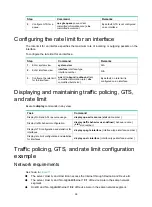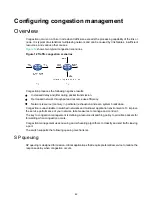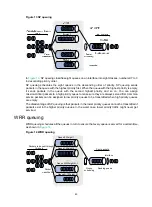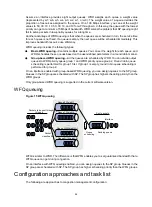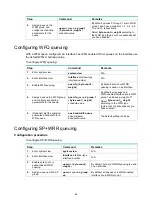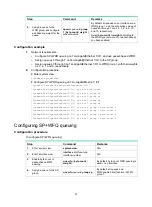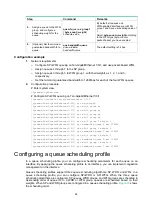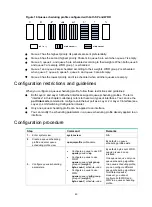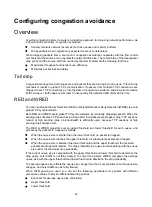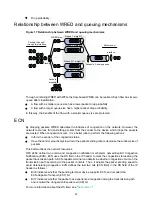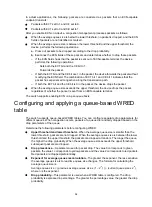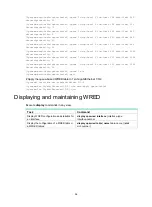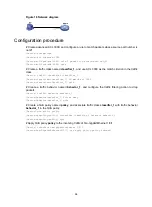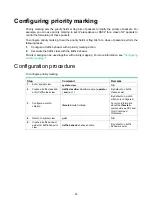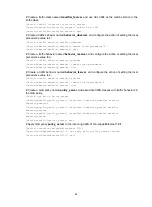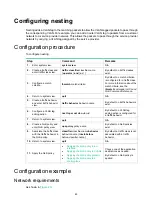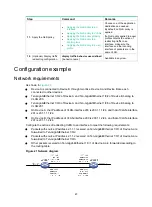
52
Configuring congestion avoidance
Overview
Avoiding congestion before it occurs is a proactive approach to improving network performance. As
a flow control mechanism, congestion avoidance:
•
Actively monitors network resources (such as queues and memory buffers).
•
Drops packets when congestion is expected to occur or deteriorate.
When dropping packets from a source end, congestion avoidance cooperates with the flow control
mechanism at the source end to regulate the network traffic size. The combination of the local packet
drop policy and the source-end flow control mechanism implements the following functions:
•
Maximizes throughput and network use efficiency.
•
Minimizes packet loss and delay.
Tail drop
Congestion management techniques drop all packets that are arriving at a full queue. This tail drop
mechanism results in global TCP synchronization. If packets from multiple TCP connections are
dropped, these TCP connections go into the state of congestion avoidance and slow start to reduce
traffic. However, traffic peak occurs later. Consequently, the network traffic jitters all the time.
RED and WRED
You can use Random Early Detection (RED) or Weighted Random Early Detection (WRED) to avoid
global TCP synchronization.
Both RED and WRED avoid global TCP synchronization by randomly dropping packets. When the
sending rates of some TCP sessions slow down after their packets are dropped, other TCP sessions
remain at high sending rates. Link bandwidth is efficiently used, because TCP sessions at high
sending rates always exist.
The RED or WRED algorithm sets an upper threshold and lower threshold for each queue, and
processes the packets in a queue as follows:
•
When the queue size is shorter than the lower threshold, no packet is dropped.
•
When the queue size reaches the upper threshold, all subsequent packets are dropped.
•
When the queue size is between the lower threshold and the upper threshold, the received
packets are dropped at random. The drop probability in a queue increases along with the queue
size under the maximum drop probability.
If the current queue size is compared with the upper threshold and lower threshold to determine the
drop policy, burst traffic is not fairly treated. To solve this problem, WRED compares the average
queue size with the upper threshold and lower threshold to determine the drop probability.
The average queue size reflects the queue size change trend but is not sensitive to burst queue size
changes, and burst traffic can be fairly treated.
When WFQ queuing is used, you can set the following parameters for packets with different
precedence values to provide differentiated drop policies:
•
Exponent for average queue size calculation.
•
Upper threshold.
•
Lower threshold.
Summary of Contents for FlexFabric 5940 Series
Page 23: ...17 Figure 3 QoS processing flow ...
Page 84: ...78 Figure 26 MPLS label structure ...
Page 91: ...85 Switch burst mode enable ...

